Understanding Token Distribution Models in Early-Stage Businesses
At Moonfire, we spend a lot of time reading whitepapers and pitch decks for past and upcoming web3 businesses.

At Moonfire, we spend a lot of time reading whitepapers and pitch decks for past and upcoming web3 businesses. When evaluating a business, we’re often interested in how the initial pool of tokens is distributed among different stakeholders, what rights derive from holding a token, and how token allocations are vesting and over what time period. As investors, these are all crucial points to consider because they can have important impacts on incentives structures and ultimately the long-term success of a project.
Tokenomics is about trade-offs and incentives
One of the more obvious trade-offs is how tokens are distributed between the team, investors and the community. Does a certain token distribution encourage the team to take long-term positive decisions for the project? Or does the vesting schedule allow for a quick pump-and-dump scheme?
More subtle trade-offs arise when thinking about how tokens are distributed among the community. Airdrops are a great way of rewarding early adopters. Similarly, staking rewards and high liquidity provision incentives with enormous return rates are commonplace in the early stages of a project to increase adoption. However, what happens when this leads to a very skewed distribution with few community members holding most of the tokens? And furthermore, is it beneficial for the project if early adopters are rewarded greatly through token accumulation and value appreciation, leaving late adopters with high entry barriers?
There are theoretical answers to most of these questions. But, being a data-driven organisation, we love verifying hypotheses with real data. And as there was no good dataset available about this topic we decided to create one ourselves
Towards an open source code and data repository for Tokenomics research
Moonfire is excited to announce the v1 release of our open source Tokenomics code and data repository on GitHub.
In its current form, the repository comprises data about token distributions of more than 60 gaming and DeFi projects. We envisage this number to grow substantially over time as new and exciting projects emerge. We are also releasing the code and the data with all sources instead of just a written report because we believe that this will increase the trust in the data and any analyses that derive from it (which we will also open source in our repository).
We are open sourcing this project for the benefit of researchers, investors, and web3 entrepreneurs alike. Moonfire is a strong supporter of open source software and data. We’ve chosen this path because we trust that with the help of the community this dataset will stay up-to-date and grow. We invite everyone to contribute and make enhancements.
Web3 projects often use different terminology to describe the recipients of tokens and sometimes there is simply not that much information available. We made a best effort to categorise different ways of distribution into the following:
- Airdrops: some projects distribute tokens to early adopters of a project to reward them for using it before any tokens were launched
- Ecosystem: a large proportion of tokens is usually reserved to grow the ecosystem. Anything that draws new users to the project or binds them to it via long-term incentives and rewards is counted in this category. This could include staking and liquidity provision rewards as well as in-game prizes and incentives
- Investors: often tokens are sold strategically to partners, angel investors or VC funds prior to public offerings
- Public Sales: token sales open to the general public, i.e. ICOs (initial coin offerings), IDO (initial DEX offerings), launchpad sales and the like
- Team: founders usually take a reasonable stake of tokens, similar to how traditional startup founders maintain a large proportion of equity. Often further allocations are made for early or future hires.
- Advisors: a route to reward advisors for their time and expertise usually before a project becomes widely known
- Treasury: a general pool of funds that can end up being distributed via one of the above channels, used to generate returns for the project or benefit the project in some other way long-term. Often governance token holders will make decisions about how the treasury is managed and how the funds are deployed
A sneak preview of the data
Version 1 of our dataset has the following high-level features:
- 63 projects overall (30 gaming and 33 DeFi)
- Earliest projects are from 2017, latest projects from 2022
- The crypto winter of 2017-2019 means that the number of projects in those years (and which survived and are still relevant) is lower than from 2020 onwards
- 2020 - the year of DeFi - marks the peak in terms of new DeFi projects in our dataset
- 2021 - the year of gaming - contributes to most of the gaming projects in our data
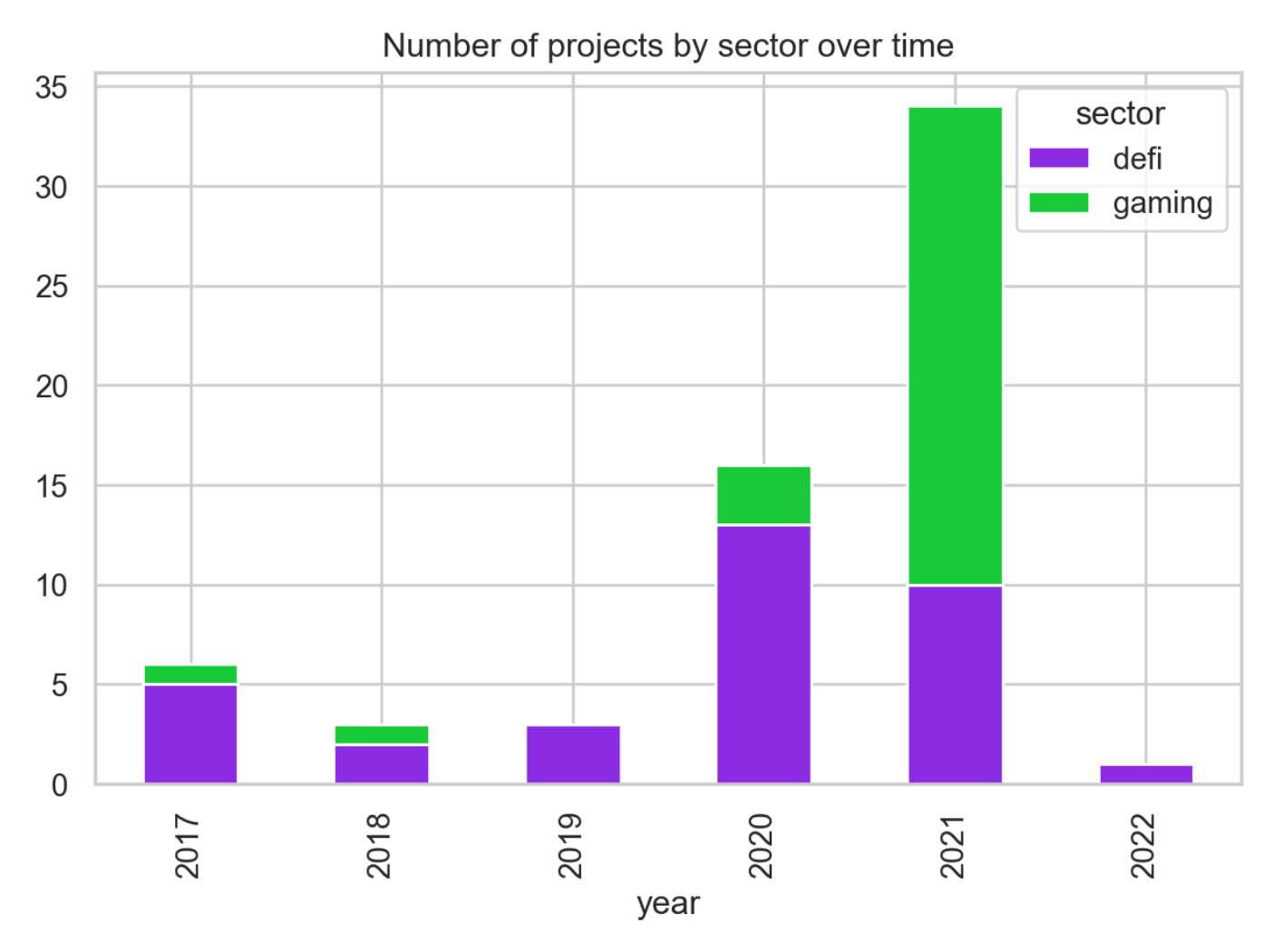
Our Tokenomics dataset allows for a birds-eye view of popular crypto games and DeFi projects. Breaking down the initial token distributions into the 7 categories outlined above, we see some interesting patterns:
- The two sectors, DeFi and gaming, are surprisingly similar in terms of token distributions;
- A notable difference is that gaming applications tend to allocate a higher proportion to the ecosystem and public sales than DeFi and slightly less to investors and the team;
- On average a higher percentage of tokens is allocated to private investors than public sales; and
- Airdrops and Advisors account for only a small proportion of tokens distributed
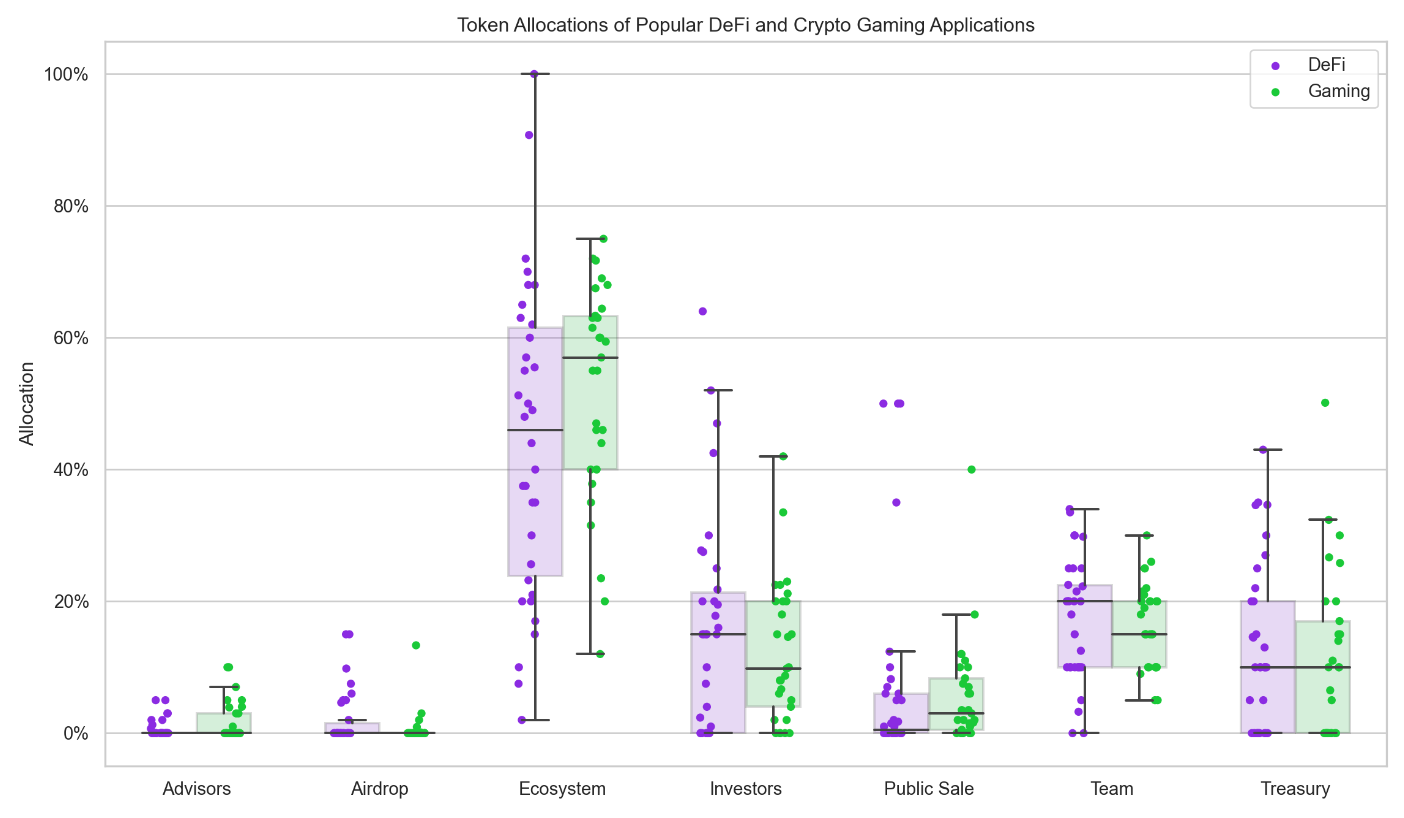
We track more data about each project, such as which Blockchains it supports (a project can support multiple blockchains). Of the projects considered in our dataset, Ethereum is the most popular blockchain overall. This is particularly true for DeFi projects. When it comes to Gaming projects we see that BSC (Binance Smart Chain) is even more popular than Ethereum. More recent gaming projects are often using BSC (or Polygon) because it allows for cheaper transactions than Ethereum. It will be interesting to see if this changes as Ethereum moves to proof-of-stake. It is worth noting that this information can get out of date rather quickly as projects add their tokens to more blockchains.
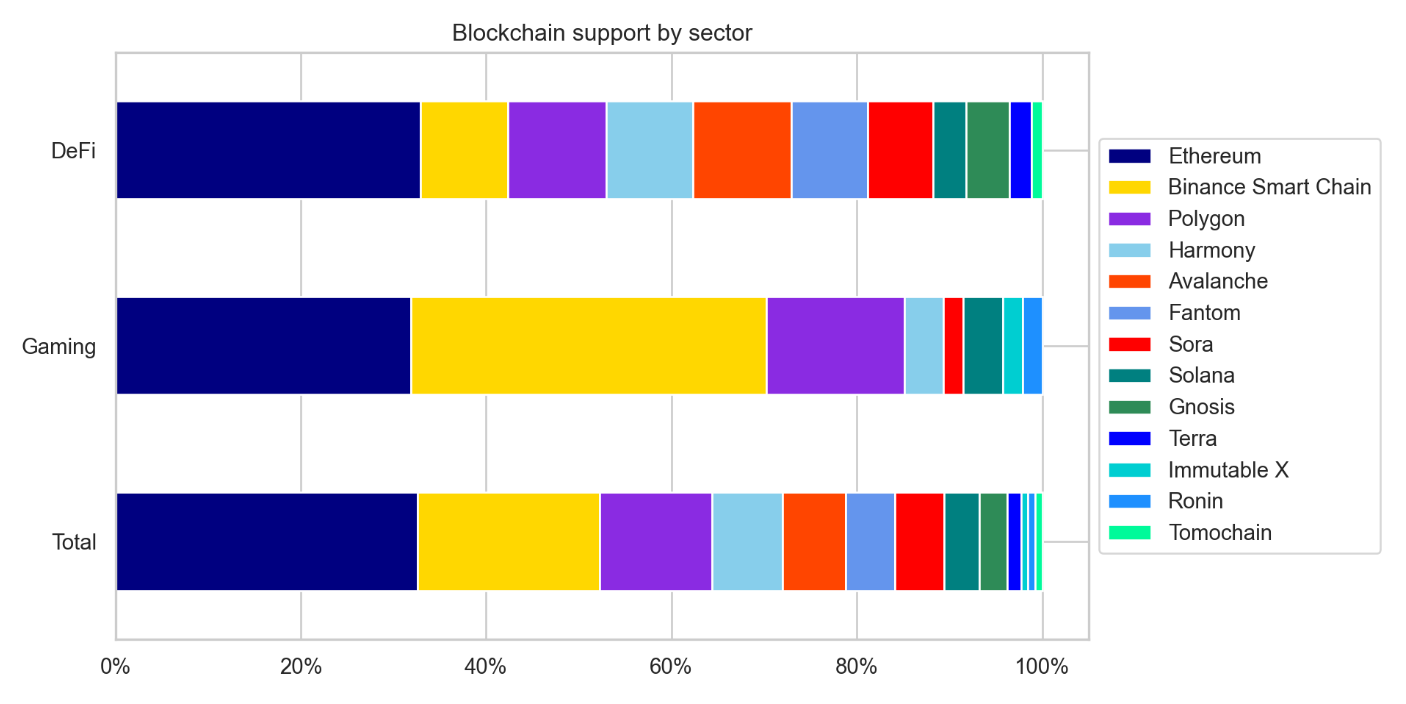
Next, we track which use cases each token in our dataset enables. As with blockchain support, each token can enable multiple use cases. A lot of the tokens we reviewed give holders voting/governance rights. The second most prominent use case is Payments, particularly in the case of games where tokens can be used to purchase in-game items. Dividends, which includes staking rewards, are a popular use case in both DeFi and Gaming.
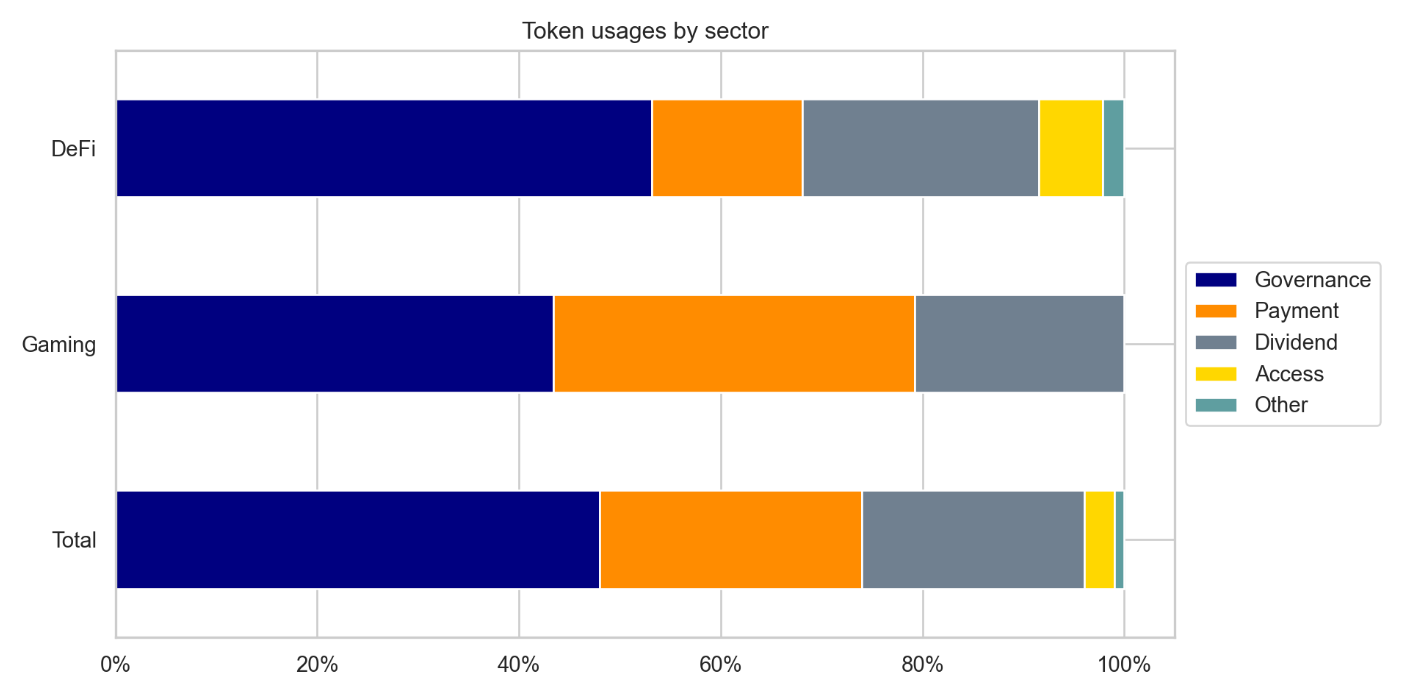
Lastly, we collect information about whether or not tokens have a fixed maximum supply. This is an important piece of information as the total supply of a token can have a big impact on its monetary value in the long term. Investors interested in maintaining governance rights in a project will likewise be interested in whether their voting share gets diluted over time due to inflation or stays constant. Most of the projects in our dataset have a capped token supply.
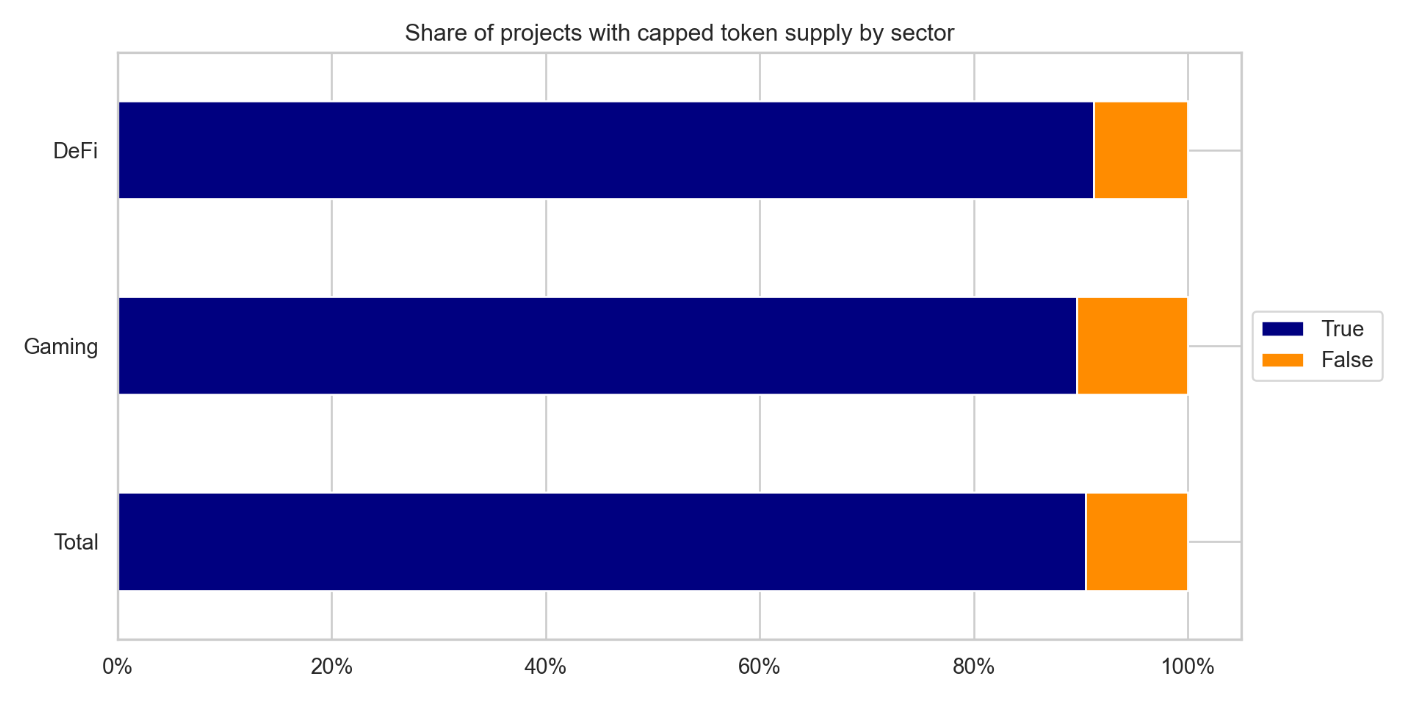
The dataset in its current form is too small to draw conclusions as to what token allocations set a project up for success. And (because we’re only human) there might be errors in our dataset. All the more reason to open source it and work together with a larger community of researchers!
How to contribute
- The latest version of the dataset will be available in csv format here.
- The way to contribute (make edits or additions) to the dataset is currently by making a PR to our public repo here.
We realise that this is only an option for people with a technical background, so we will make contributions possible via more user-friendly means in the future.
We hope that this code and data enables other to do interesting tokenomics research as well. Please get in touch with us if you have ideas for ways that we can collaborate!
🌓🔥

